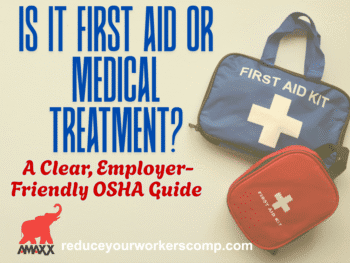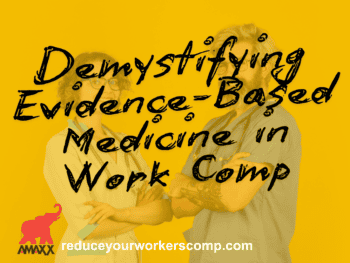The concept of “maximum medical improvement” (MMI) is an important notion in workers’ compensation claims. This concept is based on the fact that it often triggers the discontinuance of various wage loss benefits. In other instances, once an employee reaches MMI, cases are prime for settlement. Failure to identify this status promptly can add unnecessary costs to claims and the bottom line of a workers’ compensation program.
What is MMI?
Maximum medical improvement (in some instances referred to “end of healing period”) is a legal concept where no further significant recovery from or lasting improvement to a personal injury can be reasonably anticipated, regardless of subjective complaints from the employee. In essence, additional medical care and treatment may still be required to keep the employee in a stable condition, but no noticeable improvement will take place in that medical care.
Each jurisdiction has a legally defined standard for MMI. This standard is defined in statute or rule and interpreted via case law. Any doctor or health care provider can usually declare an injured employee to be at MMI if they have an adequate foundation to issue their findings and opinions within a reasonable degree of medical certainty.
Click Link to Access Free PDF Download
“The 6-Step Process To Determine Workers’ Comp Injury Causation”
Significance of MMI in Your Claim
Placing an employee suffering the effects of a work injury at MMI has a significant impact on the employee’s ability to receive future workers’ compensation benefits including entitlement to wage loss. In some jurisdictions, it can reduce or limit the employee’s ability to receive future medical care via a workers’ compensation program.
Regarding wage loss benefits, many jurisdictions allow the employer and insurer to discontinue wage loss benefits once a medical opinion of MMI has been given and notice given to the employee. This primarily includes the discontinuance of temporary total disability benefits and in other cases temporary partial disability benefits. Once this occurs, a workers’ compensation claim can take several directions:
- The employee can challenge the MMI determination and seek to have temporary total or temporary partial disability benefits reinstated;
- Forces the employee to return to work in some capacity; or
- Encourages the employee to be open to settling their workers’ compensation claim.
In many jurisdictions, wage loss benefits such as temporary total or temporary partial disability benefits can be reinstated should the employee’s condition worsen. If a medical opinion is given regarding MMI from an independent medical examiner, it is important to receive that medical expert’s opinions on the following issues:
- Additional medical care and treatment the employee may require;
- Restrictions and limitations on the employee’s condition; and
- Applicable permanent partial disability ratings. This rating should also include a detailed description as to why it is appropriate per the applicable guidelines.
Using MMI to Settle Your Claim
Once an employee reaches MMI, it is important to move a workers’ compensation claim toward settlement. This is important for several reasons:
- Once the employee reaches MMI, there will typically be a finding regarding additional future medical care and treatment. This allows for the preparation of a Medicare Set-aside allocation, if appropriate;
- Allows for the defense interests to evaluate future indemnity exposures better. This also allows for reserves to be more accurately set and also to receive settlement authority; and
- Facilities a better transition for the employee to return to work, even in a restricted capacity. This is based on the establishment of permanent work restrictions.
Interested stakeholders should never wait for the employee to make the first move when it comes to settling a workers’ compensation claim. Be proactive and contact the employee or their attorney regarding this matter.
Conclusions
MMI is an important legal concept for members of the claims management team to understand. They should also view it as an important milestone in their case and an opportunity to settle a workers’ compensation claim. By taking these steps, interested stakeholders can reduce costs in their workers’ compensation programs.

Author Michael Stack, CEO Amaxx LLC. He is an expert in workers compensation cost containment systems and helps employers reduce their work comp costs by 20% to 50%. He works as a consultant to large and mid-market clients, is co-author of Your Ultimate Guide To Mastering Workers Comp Costs, a comprehensive step-by-step manual of cost containment strategies based on hands-on field experience, and is founder & lead trainer of Amaxx Workers’ Comp Training Center. .
Contact: mstack@reduceyourworkerscomp.com.
Workers’ Comp Roundup Blog: https://blog.reduceyourworkerscomp.com/
©2017 Amaxx LLC. All rights reserved under International Copyright Law.
Do not use this information without independent verification. All state laws vary. You should consult with your insurance broker, attorney, or qualified professional.













